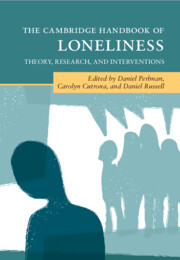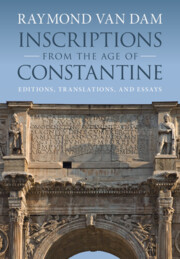Refine search
Actions for selected content:
3387640 results

The World of Leonard Cohen
- Coming soon
-
- Expected online publication date:
- January 2026
- Print publication:
- 29 January 2026
-
- Book
- Export citation
Empirical Legal Studies in EU Law
- Coming soon
-
- Expected online publication date:
- January 2026
- Print publication:
- 31 January 2026
-
- Book
- Export citation

New Regional Authorities
- Self-Determination and the Global South
- Coming soon
-
- Expected online publication date:
- January 2026
- Print publication:
- 31 January 2026
-
- Book
- Export citation

Hegel's Inversion of Philosophy
- The Metaphysics of the Made
- Coming soon
-
- Expected online publication date:
- January 2026
- Print publication:
- 31 January 2026
-
- Book
- Export citation
Reading Sympathy in Romantic Literature
- Coming soon
-
- Expected online publication date:
- January 2026
- Print publication:
- 31 January 2026
-
- Book
- Export citation

Seminars in Perinatal Psychiatry
- Coming soon
-
- Expected online publication date:
- January 2026
- Print publication:
- 31 January 2026
-
- Book
- Export citation
Triage Bureaucracy
- The Organizational Challenge of Implementing Growing Policy Stocks
- Coming soon
-
- Expected online publication date:
- January 2026
- Print publication:
- 31 January 2026
-
- Book
- Export citation
Quantum Mechanics
- A Physical Approach
- Coming soon
-
- Expected online publication date:
- January 2026
- Print publication:
- 31 January 2026
-
- Book
- Export citation

Reading Biblical Greek
- A Graded Reader for Beginners
- Coming soon
-
- Expected online publication date:
- January 2026
- Print publication:
- 31 January 2026
-
- Textbook
- Export citation
Heidegger and German Platonism
- The Shadows of Marburg
- Coming soon
-
- Expected online publication date:
- January 2026
- Print publication:
- 31 January 2026
-
- Book
- Export citation

The Cambridge Handbook of Loneliness
- Theory, Research, and Interventions
- Coming soon
-
- Expected online publication date:
- January 2026
- Print publication:
- 31 January 2026
-
- Book
- Export citation

Knowledge-Infused Learning
- Neurosymbolic AI for Explainability, Interpretability, and Safety
- Coming soon
-
- Expected online publication date:
- January 2026
- Print publication:
- 31 January 2026
-
- Book
- Export citation

Inscriptions from the Age of Constantine
- Editions, Translations, and Essays
- Coming soon
-
- Expected online publication date:
- January 2026
- Print publication:
- 31 January 2026
-
- Book
- Export citation
The Topography and Monuments of Ancient Rome
- Coming soon
-
- Expected online publication date:
- January 2026
- Print publication:
- 31 January 2026
-
- Book
- Export citation

Convex Polytopes and Polyhedra
- Coming soon
-
- Expected online publication date:
- January 2026
- Print publication:
- 31 January 2026
-
- Book
- Export citation

Challenging the Caliphate
- Wahhabism and Mahdism in the Late Ottoman Empire
- Coming soon
-
- Expected online publication date:
- January 2026
- Print publication:
- 31 January 2026
-
- Book
- Export citation

Violent Waters
- Environmental Politics in Early Modern England
- Coming soon
-
- Expected online publication date:
- January 2026
- Print publication:
- 31 January 2026
-
- Book
- Export citation
Huguenot Networks
- Truth and Secrecy in Sixteenth-Century Europe
- Coming soon
-
- Expected online publication date:
- January 2026
- Print publication:
- 31 January 2026
-
- Book
- Export citation

Entrepreneurial Finance
- The Art and Science of Growing Ventures
- Coming soon
-
- Expected online publication date:
- January 2026
- Print publication:
- 31 January 2026
-
- Textbook
- Export citation

Beyond Grammar and the Lexicon
- Indicating and Depicting in Sign Language Discourse
- Coming soon
-
- Expected online publication date:
- January 2026
- Print publication:
- 31 January 2026
-
- Book
- Export citation
